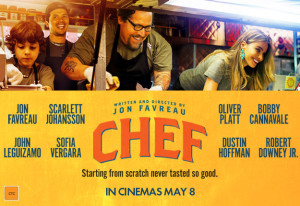
Preparing for a presentation on leadership to doctors who manage group practices, I was warned that doctors tend to solve management problems based on their medical specialty.
- Ask a surgeon what to do about a difficult employee and chances are their response will be surgical: remove the offender.
- Those in the more cerebral specialties – such as endocrinology – think it through ad nauseam.
- Psychiatrists want to talk about it.
Doctors are not alone. Most people see and solve problems based on their education, area of expertise, interests and beliefs.
Marketing and sales professionals are highly likely to relate differently to you and your content than those from accounting or legal. The former will tend to respond to intangibles such as stories, humor and anecdotal evidence, while legal and accounting will react to facts, figures and tangible evidence.
LAB – Use it to reach your diverse audience.
L – LEARN
Learn as much as you can about the audience ahead of time. Get a strong sense of how they think, how they go about evaluating and solving problems and where their biases and beliefs lie.
A – ARRAY OF APPROACHES
If you have a diverse audience, use an array of approaches. Offer just the right mix of stories and substance, humor and facts, and encouragement and evidence.
B – BIASES
Evaluate your own mindset and biases. If you love humor, chances are you are erring in that direction. If you think technicalities are critical, you’re probably losing a good chunk of your audience. If you’re impatient and like to get to the point quickly, some are being left in your dust.
While you may not be able to please all the people, all the time, LAB will increase the percentage of your audience that will understand, accept and act on your message.
Join us at The Speaking Intensive. Presenters from The Chicago Bulls, Merrill Lynch, Rockwell Collins and 40 other firms already have. Now it’s your turn. Catch the early registration discount for September!
© Copyright 2014 The Parisse Group, Inc.

|
Hall of Fame speaker Alan Parisse has been coaching presenters and delivering keynotes for over 25 years. Named “One of the Top 21 Speakers for the 21st Century” by Successful Meetings Magazine, he is a keynote speaker for a wide variety of industries and organizations. Alan is a passionate presentation coach to executives, financial advisors, sports stars and sales presenters. |

|
Lisa Casden has been coaching presenters for 10 years. A former professional figure skater, coach and choreographer, Lisa leverages her unique background and point of view to help speakers organize their physicality in ways that best support their message. |

Have you seen the movie The Chef? Fandango describes it: “An out-of-work L.A. chef who opens a food truck in a bid to realize his culinary potential …” While this is an accurate description, we saw more.
In the movie, an established restaurant is going to be reviewed by a renowned food blogger. The chef knew the current menu was downright dowdy – better suited to the country club set than today’s foodies. So he created a gastronomic wonder of a menu – one that would amaze and delight both blogger and customers.
Then the owner stepped in: “We are being reviewed by the most important critic in the city. Now suddenly you are going to be an artist. Be an artist on your own time! Cook my menu!”
The chef knew better, but grudgingly cooked as commanded. As you can imagine, the food blogger crucified courses and chef – setting the movie off on an interesting direction.
Moving to real life, ever have this happen?
You have a great idea – creative, effective and targeted at current audiences. This one is the one. You feel it in your bones and see it in your colleagues. It’s exactly what people want to hear right now.
But senior management insists you stick with the tried and true. “This presentation has helped us grow for the past 5 years. We are not changing it now, when the stakes are high.”
So you do it the boss’s way … and it’s an epic fail.
Whose fault was it?
The boss’? Sure.
Compliance? Well … you know compliance!
Where do you land in the blame game?
What might you have done to create or at least compound the failure? Did you deliver that stock presentation with the same passion as you would have your new idea? What could you have done differently?
There are the high risk approaches – good ideas that might have you looking for a new job:
- Move forward with your new idea and hope it is so successful that management will forgive your transgression as they focus on the result.
- Slip in some of the new material without being too obvious.
- Shut off the LCD projector and tell your compelling story.
Here’s a no risk approach: SHIFT SUBTEXT.
Move the subtext from something about which you are passionate under your words.
What is subtext? Text is the words. Subtext is everything else: how you say it, how it looks, and how it feels. In a movie, subtext is the action, the music, the visuals. In life, it’s the emotions and feelings that drive the way you deliver the text.
The trick is to replace the subtext you feel about the stock presentation with subtext from somewhere else. It may come from your feelings about family, a favorite sports team or the idea the bosses squelched. Shift the enthusiasm you have for that under the text of that past it’s prime presentation.
Go ahead … test drive it. Deliver Lincoln’s Gettysburg Address with all of the fervor, tenacity and zeal displayed when watching your favorite team in the World Cup of Anything. I’m serious. Find an empty room, close the door and do it. Full volume. Feels oddly strange and fun at the same time, right?
Now dial it back a notch or two and deliver your boss’ presentation. It may feel a bit “big” but it’s better, isn’t it?
As we write this blog post, Lisa and I are preparing for next week’s Speaking Intensive. Thankfully, we don’t have someone looming over us saying: “The program works the way it is. Always. Every single time. Why change it?”
Why indeed. Don’t worry. We aren’t re-making the entire “menu” but we are spicing up a recipe or two.
Join us at The Speaking Intensive. Presenters from The Chicago Bulls, Merrill Lynch, Rockwell Collins and 40 other firms already have. Now it’s your turn. May sold out. Just 1 seat left in the July session. Catch the early registration discount for September!
© Copyright 2014 The Parisse Group, Inc.

|
Hall of Fame speaker Alan Parisse has been coaching presenters and delivering keynotes for over 25 years. Named “One of the Top 21 Speakers for the 21st Century” by Successful Meetings Magazine, he is a keynote speaker for a wide variety of industries and organizations. Alan is a passionate presentation coach to executives, financial advisors, sports stars and sales presenters. |

|
Lisa Casden has been coaching presenters for 10 years. A former professional figure skater, coach and choreographer, Lisa leverages her unique background and point of view to help speakers organize their physicality in ways that best support their message. |

This 4th of July weekend take a few minutes to watch a balloon twister at work. You know, those street performers who expand, twist and tie balloons turning them into some pretty impressive sculptures.
Why would a business presenter want to watch a street artist twist balloons? Because the best of them have a lot to teach us about grabbing, keeping and inspiring audiences.
LESSON #1: START STRONG
Here in Boulder, CO, we see balloon twisters almost every weekend. Most people marvel at the sculptures they create but we are even more impressed by the crowds they capture and delight. These artists attract their audiences as they walk by distracted – texting, talking, window shopping and chasing after kids.
In a sense, business and professional audiences are walking by, too. They are not seated waiting patiently for the speaker to get to the point. Instead they are multi-tasking in their head and on their personal technology.
So take a clue from balloon twisters: start with strength.
Balloon twisters begin with a “bang”. Not that they pop the balloon, but they start hard and fast to get people’s attention. They take a breath and push that air forcefully and confidently into the balloon.
They begin with a big move and so should you. Use your opening words to get the audience’s attention and to set the tone for the rest of the presentation. Starting off with the standard “Thank you for taking the time to hear what I have to say today. It is great to be here in your wonderful city” will likely result in repointing the audience back to their smart phones or worse … the door.
Instead, do what balloon twisters do: attract attention and get the audience interested by creating a curiosity gap: “What are they going to create with those balloons?”
Presenters: create a gap between what the audience already knows – or think they know – and what you are going to tell them.
Here’s one option: open with a question. Start out with “Do you know what you should do?” and watch as the audience mentally – and sometimes verbally – responds with “What?” or “About what?”
Answer with the main point of your speech and you’re on your way. You will have demonstrated without words that, just like balloon twisters, you are competently in control of the subject matter and yourself.
LESSON #2: CREATE A SOUND STRUCTURE
Once balloon twisters create their curiosity gap, they gradually build suspense, intensity and drama as they shape their sculpture one step at a time – tying off each balloon as they do – completing it so everything links together.
When they get a sense that the audience is drifting, twisters do something quick and unexpected to get them back. One we saw even burst a balloon and joked about it.
LESSON #3: TIE A KNOT AT THE CLOSE
All of the balloon twister’s efforts lead to a dramatic close – a work of art – and a memory people can take away.
Just like they do, you want to build to a dramatic close where the audience can leave being or doing something differently.
Fizzle out at the end and you’ll let some or all of the air out of the balloon. Try to do too much with an over the top close and you’ll burst the balloon leaving the audience with nothing to take away.
Don’t let the air out at the end. Position your audience to walk away with a stunning multi-colored balloon sculpture.
Summing up from the business presenter lens:
- Grab attention and create a curiosity gap.
- Gradually build intensity, suspense and drama.
- Pay attention to the audience and get them back if they drift away.
- As you make different points, tie them down securely.
- Lead toward a compelling close the audience can take away.
Do you build your talks that way?
Join us at The Speaking Intensive. Presenters from The Chicago Bulls, Merrill Lynch, Rockwell Collins and 40 other firms already have. Now it’s your turn. May sold out. Just 2 seats left in the July session. Catch the early registration discount for the September session!
© Copyright 2014 The Parisse Group, Inc.

|
Hall of Fame speaker Alan Parisse has been coaching presenters and delivering keynotes for over 25 years. Named “One of the Top 21 Speakers for the 21st Century” by Successful Meetings Magazine, he is a keynote speaker for a wide variety of industries and organizations. Alan is a passionate presentation coach to executives, financial advisors, sports stars and sales presenters. |

|
Lisa Casden has been coaching presenters for 10 years. A former professional figure skater, coach and choreographer, Lisa leverages her unique background and point of view to help speakers organize their physicality in ways that best support their message. |

… Larry the Cable Guy, John Kennedy, Rodney Dangerfield, Johnnie Cochran, and Martin Luther King have in common?
Foundational phrases! Short, memorable phrases that sum up the core of a presentation and upon which talks are built.
Since our brains tend to remember a few consecutive words that paint a memorable picture, make your phrase pithy and picturesque. Say it early and repeat it at least a few times during your speech. Make it more memorable: pause for a beat or two before and after you say your phrase. Then add texture and complexity by emphasizing different words and varying the cadence and tone each time you repeat it. If appropriate, you might make it the last words out of your mouth at the end of your talk.
Here are four famous foundational phrases from speeches:
- Martin Luther King had a foundational phrase in his “I Have a Dream” speech.
- Ronald Reagan did too with “Mr. Gorbachev, tear down this wall.”
- John Kennedy had “Ask not what you country can do for you …”
- Attorney Johnnie Cochran summed up a 12 week trial by repeating the phrase with “If it doesn’t fit, you must acquit.”
Some comedians have defined their stage persona with a foundational phrase, and they repeat it in virtually every performance:
- Jeff Foxworthy: “You might be a redneck.”
- Rodney Dangerfield: “I get no respect.”
- Larry the Cable Guy: “Git’er Done.”
Then there’s me. I did it at the Million Dollar Round Table with “People Need Your Advice.”
Join me at The Speaking Intensive to uncover and build your foundational phrases. Presenters from United Technologies, Mass Mutual & MFS and 40 other firms already have. Now it’s your turn. The May session is sold out. Catch the early registration discount for the July and September sessions!

|
Hall of Fame speaker Alan Parisse has been coaching presenters and delivering keynotes for over 25 years. Named “One of the Top 21 Speakers for the 21st Century” by Successful Meetings Magazine, he is a keynote speaker for a wide variety of industries and organizations. Alan is a passionate presentation coach to executives, financial advisors, sports stars and sales presenters. |
Zzzzzz … Start your presentation like you mean it. Openings are prime time. Use yours to connect, spark interest, elicit emotion, and attract attention. Don’t waste it on clichés and platitudes.

There are lots of options. Depending on the group, the setting, your objective, and your style, you might:
- Explode with energy and enthusiasm.
- Say something significant or momentous.
- Draw them in by standing silent, calm, and confident.
- Ask a compelling question.
- Issue a challenge.
- Confuse them just enough to provoke curiosity.
- Tell a story that makes a powerful and relevant point.
Ideally, your opener will create a ‘curiosity gap’: a void between what they already know and what your opener makes them eager to know. Whatever you do, make your opener a good one. Bore them at the beginning and good luck getting them back.
Learn the secret to explosive starts and more.
Join me at the next edition of The Speaking Intensive.
Presenters from United Technologies, Mass Mutual & MFS and 40 other firms already have. Now it’s your turn.

|
Hall of Fame speaker Alan Parisse has been coaching presenters and delivering keynotes for over 25 years. Named “One of the Top 21 Speakers for the 21st Century” by Successful Meetings Magazine, he is a keynote speaker for a wide variety of industries and organizations. Alan is a passionate presentation coach to executives, financial advisors, sports stars and sales presenters. |







